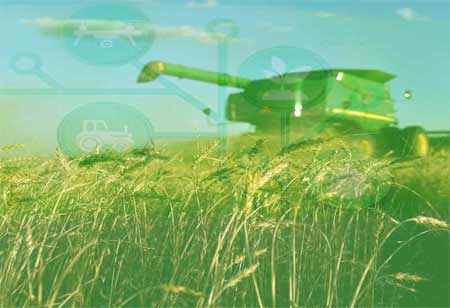Thank you for Subscribing to Agri Business Review Weekly Brief
Reducing the Environmental Impact of Crop Protection Approaches
Agricultural activities have a significant impact on the environment.

By
Agri Business Review | Friday, October 28, 2022
Stay ahead of the industry with exclusive feature stories on the top companies, expert insights and the latest news delivered straight to your inbox. Subscribe today.
New ways to farm and more precise applications offer a vast opportunity to reduce the impact of crop protection on the environment.
FREMONT, CA: Agricultural activities have a significant impact on the environment. Every tool used by farmers has benefits and drawbacks, and this is often true for crop protection. Farmers should strike a balance between the need for equipment like crop protection, enabling them to meet global growing agricultural demands while using fewer land and resources, and the potential trade-offs created by the increasing use of such tools.
The necessity for deploying crop protection products on the market is due to efficacy while ensuring no effects on human health and only a minimal, acceptable environmental impact. Government authorities highly regulate crop protection products. Companies have consistently tried to develop and offer crop protection products having the same or better benefits for farmers while posing less impact on the environment.
A Data-Driven Strategy to Reduce the Environmental Impact of Crop Protection
There is no single solution for all issues in agriculture, and a few approaches working for one grower will not work for another. Organisations have collaborated with others and crops where they significantly impact optimising their entire integrated crop management approach. With ever-expanding tool sets driven by innovation, companies partner with growers to choose crop protection solutions tailored to their farms that both add value and minimise the environmental impact of their operations.
To achieve this, a few companies optimise pesticide volumes required per hectare through various tools. This includes precision application with data-driven tools, ensuring the right amount of crop protection is applied properly and at the right time. Another tool is seed-applied crop protection tools reducing the chemicals used and potential exposure to wildlife and the environment. It also includes crop breeds and is designed to fight the pests and diseases attacking them, ensuring it needs less chemical crop protection.
Identifying New Crop Protection Solutions
New chemistry and biology are examples of novel techniques that significantly reduce environmental impact. New chemistry deals with new action modes with better environmental profiles, delivering the same efficacy while mitigating potential environmental risk and exposure. This has enabled the screening of new substances at the early stages of the pipeline for their environmental impact and including this assessment in pipeline advancement decisions. On the other hand, biologics offer a number of products extracted from microbes or based on natural defence mechanisms of organisms, complementing and enhancing integrated management methods and reducing pest resistance.
Stewardship measures and integrated pest management improve sustainability and alleviate environmental impacts. Optimal agricultural methods such as buffer strips, tillage practices, cover crops, or drift and run-off-reducing measures keep crop protection where it is intended. At the same time, a holistic, systemic approach to pest management on a seasonal or multi-year timescale is also advantageous.





